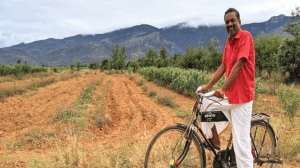By Dr Ridham Kakar
Former UN Secretary General Ban Ki-moon stated that Zinc is a life saving commodity. It should make us wonder that how a plant “MICRONUTRIENT” and a “TRACE MINERAL” for human body could be a life saving commodity. If we look at the stats, zinc is the most commonly deficient micronutrient in the world, affecting nearly 50% of the world’s agricultural soils. And what does this lead to?? The effects are seen in both crop and human health. Zinc deficiency limits agricultural productivity, reduce crop immunity, making it prone to all kinds of stress and deteriorate crop’s nutritional benefits because of low zinc content in crop’s produce. With regards to human population, it is estimated that nearly one thirds of world population is zinc deficient, which has resulted in several health complications and stunted conditions in children. Studies have demonstrated that 49.4% of adolescent girls in Delhi and 52% non-pregnant women of central India suffered from zinc deficiency. About 2.1 million deaths among Indian children (<5 years) occur every year because of diarrhoea, typhoid, malaria, measles, and pneumonia- all resultants of Zn deficiency.
The only plausible reason for this scenario is inadequate intake of zinc through our daily diet and imbalanced fertilization in our major cereal crops (nearly 45% of Indian soils are zinc deficient but the management practices are not suitable enough). All our major staple crops such as rice, wheat, maize and legumes critically suffer from zinc deficiency concern. The causes for deficiency could be low zinc content in soils, light soils, low organic matter content, soil salinity, calcareous soils, high soil pH, excessive use of phosphatic fertilizers, flooded conditions, and obviously our ill management practices. The onus of fighting the ill effects of zinc deficiency in our soils, crops and population, rightly lies on the shoulders of fertilizer suppliers, research institutions, government and the farmer-most important citizen of the country. Its high time now and zinc cannot be ignored just by saying that it is a micronutrient, it is as important as Nitrogen for increasing crop productivity, crop health and nutritional quality of both crop produce and human lives.
Every crop package of practice must follow the 4R nutrient stewardship and include the recommendations for micronutrients, especially zinc. Zinc fertilization can be done through both soil and foliar application. In next few days, if you travel by road, the entire Indo-Gangetic plain would appear to be painted green with paddy fields. But this green paint would definitely have patches of yellow in between the field, a direct indication of zinc deficiency in the initial days of zinc loving paddy crop. Once the paddy crop gets affected by zinc deficiency in the initial days itself it affects its vegetative growth, leaf size, tillering, root growth and if not treated properly zinc deficiency can even lead to reduced No. of grains and grain filling. The practice of giving zinc with first soil application of urea is highly adapted by the farmers of entire rice belt of India. However, its time now that this practice should be done wisely and the problem of low use efficiency of zinc and non-uniform spread of zinc on the paddy field is overcome with new age technology of giving zinc as coating on each and every granule of urea. This would ensure that there is improved zinc use efficiency by the crop and with and every granule of urea, there is a uniform distribution of zinc in the field for each plant. Hence, the green paint of paddy field would extend from one corner to the end without any yellowing and with new age coating zinc being absolutely safe, their incorporation in the crop would also increase the zinc content of the crop.
New age Zinc fertilization can a be really lifesaving practice, for millions of people across the world.
The author is YaraVita Manager Sales and Marketing – Yara India
Disclaimer: Views expressed are personal and do not reflect the official position or policy of Financial Express Online. Reproducing this content without permission is prohibited.









